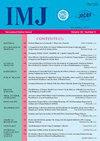考虑凝血系统状态的女性异常子宫出血的现代管理原则
Q4 Medicine
引用次数: 0
摘要
育龄妇女异常子宫出血需要有效的急救。为了确定止血系统紊乱的特征,120名女性在入院出血时、月经周期第5-7天的治疗期间以及治疗结束后6-12个月后接受了直接检查。先天性和后天性止血系统缺陷的确定成为选择合并和孤立形式的异常子宫出血的主要标准。根据病因选择患者的治疗措施,并单独考虑出血强度、贫血程度和凝血参数。分期治疗包括止血、调节月经周期和进一步预防出血。研究发现,在没有病因治疗的情况下,育龄期的子宫出血会导致出血后贫血的发展。出血的严重程度和性质由血小板聚集功能受损的止血系统的血小板系统中是否存在缺陷决定。使用估计血小板聚集量的方法对患者的总凝血潜能、初次止血和血管内凝血状态进行研究,可以检测和区分止血系统中的疾病。根据研究结果,可以得出结论,在异常子宫出血患者中使用纤维蛋白溶解抑制剂有助于提高凝血系统的活性,并在第2−5天完全止血。从月经周期的第一天开始预防性服用抗纤溶药物可以减少失血,稳定月经功能,并显著改善患者的心理情绪状态。关键词:异常子宫出血、凝血、纤维蛋白溶解抑制剂。本文章由计算机程序翻译,如有差异,请以英文原文为准。
MODERN PRINCIPLES OF MANAGEMENT OF WOMEN WITH ABNORMAL UTERINE BLEEDING, TAKING INTO ACCOUNT THE BLOOD COAGULATION SYSTEM STATE
Abnormal uterine bleeding in women of childbearing potential requires effective emergency care. To determine the features of disorders in the hemostasis system, 120 women were directly examined at the time of bleeding on admission to the hospital, during treatment on days 5−7 of the menstrual cycle, as well as after 6−12 months from the end of treatment. Determination of congenital and acquired defects of the hemostasis system became the main criterion for the selection of combined and isolated forms of abnormal uterine bleeding. Treatment measures for patients were etiopathogenetically selected and individually the intensity of bleeding, the degree of anemia, coagulation parameters were taken into account. The staged treatment involved stopping the bleeding, regulating the menstrual cycle and further preventing the bleeding. It has been found that uterine bleeding in reproductive age in the absence of etiopathogenetic treatment leads to the development of posthemorrhagic anemia. The severity and nature of bleeding is determined by the presence of defects in the platelet system of the hemostasis system with impaired platelet aggregation function. The study of total coagulation potential, primary hemostasis and the state of intravascular hemocoagulation in the patients using the methods for estimating the amount of platelet aggregation allows to detect and differentiate disorders in the hemostasis system. According to the results of the study, it can be concluded that the use of fibrinolysis inhibitors in the patients with abnormal uterine bleeding helps to increase the activity of the blood coagulation system and complete cessation of bleeding on the 2nd−5th day. Prophylactic administration of antifibrinolytic drugs from the first day of the menstrual cycle reduces blood loss, stabilizes menstrual function and significantly improves the psycho−emotional state of patients.
Key words: abnormal uterine bleeding, blood clotting, fibrinolysis inhibitors.
求助全文
通过发布文献求助,成功后即可免费获取论文全文。
去求助
来源期刊

International Medical Journal
医学-医学:内科
自引率
0.00%
发文量
21
审稿时长
4-8 weeks
期刊介绍:
The International Medical Journal is intended to provide a multidisciplinary forum for the exchange of ideas and information among professionals concerned with medicine and related disciplines in the world. It is recognized that many other disciplines have an important contribution to make in furthering knowledge of the physical life and mental life and the Editors welcome relevant contributions from them.
The Editors and Publishers wish to encourage a dialogue among the experts from different countries whose diverse cultures afford interesting and challenging alternatives to existing theories and practices. Priority will therefore be given to articles which are oriented to an international perspective. The journal will publish reviews of high quality on contemporary issues, significant clinical studies, and conceptual contributions, as well as serve in the rapid dissemination of important and relevant research findings.
The International Medical Journal (IMJ) was first established in 1994.
 求助内容:
求助内容: 应助结果提醒方式:
应助结果提醒方式:


